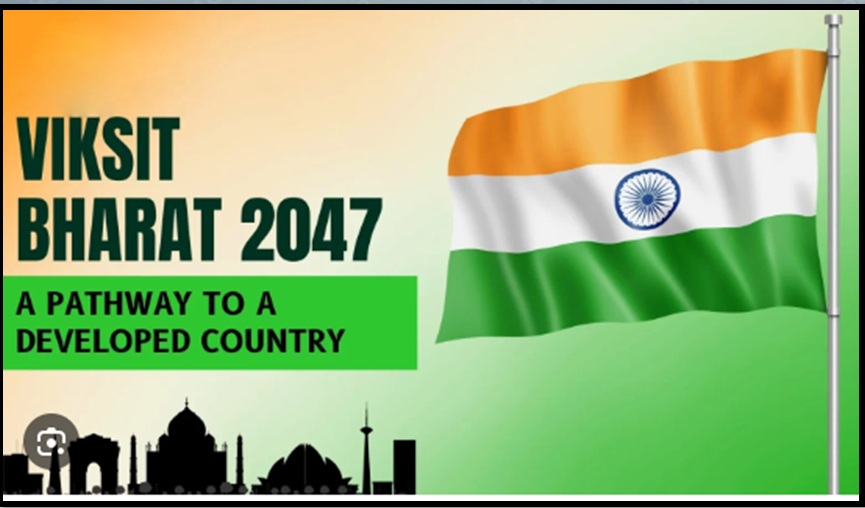TRADE POLICY REIMAGINED: CHARTING A COURSE FOR VIKSIT BHARAT
Syllabus:
- GS-3– Trade policy , Role of WTO , Internal and external dynamics for economic development , Atma nirbhar Bharat Abhiyaan ,Impact of Globalization on Trade
Focus :
- The article emphasizes the need for India’s trade policy to evolve to meet ambitious export targets while balancing domestic production and global market integration. It advocates reducing tariffs, rethinking trade agreements, and addressing internal differences to maximize opportunities in the current geopolitical landscape.
Source-TH
Introduction
- The Indian government’s commitment to Viksit Bharat reflects ambitious growth targets, especially for exports.
- The commerce minister has set a goal to elevate exports of goods and services from $775 billion (2023-24) to $2 trillion by 2030, necessitating a trade policy overhaul.
Internal Self-Reliance vs. Global Trade
The Dilemma of Atmanirbharta
- Atmanirbharta (self-reliance) often perceived as a rationale for increased protectionism, sparking debate on the right balance between supporting domestic industries and engaging in global trade.
- Historical context: The raise in import duties in 2017 marked a shift towards protectionism, deviating from a long-standing trend of gradual duty reduction.
Recent Reforms
- The 2024 budget signals a shift towards more competitive domestic production through the reduction of import duties.
- An internal review of tariff structures is planned, but there are concerns about its effectiveness without external expert involvement.
Reforming Tariff Structures
Need for Drastic Changes
- Current upper-end duties deemed too high should align with those of peer emerging market economies to enhance competitiveness.
- The removal of tariffs should be gradual yet consistent, coupled with depreciation measures to support exporters without undermining domestic industries.
Global Trade Dynamics
Importance of Global Value Chains
- GVCs now significantly influence worldwide goods trade, necessitating strategies to attract multinational corporations to set up production facilities in India.
- Joining Free Trade Agreements (FTAs) is crucial for ensuring smooth duty-free access to components essential in GVCs.
About Atmanirbhar Bharat Strategy
|
The Shift Towards FTAs
- Advanced economies are abandoning multilateral trade negotiations, gravitating towards FTAs.
- India must adapt by pursuing FTAs that facilitate multinational investment and production.
Geopolitical Landscape
Opportunities Amidst Tensions
- The current geopolitical climate presents both challenges and opportunities for India, particularly with the West’s strained relations with China and Russia.
- MNCs are likely to pursue a “China plus one” strategy, positioning India as a favorable alternative.
Engaging in Regional Agreements
- The potential to join significant trade blocs, such as the Comprehensive and Progressive Agreement for Trans-Pacific Partnership (CPTPP), should be explored despite the hurdles of high standards and obligations.
- A thoughtful reconsideration of environmental and labor standards is essential to align with global trade practices.
Bilateral Investment Treaties (BITs)
Revisiting Investment Protections
- Canceling existing BITs in favor of a new model poses risks, as it limits investors’ recourse to international arbitration amid domestic legal delays.
- A balanced approach is warranted to attract substantial foreign investment, especially in critical industries.
Current Trade Agreements
Progress on FTAs
- Limited FTAs signed with the UAE and European Free Trade Association, alongside preliminary agreements with Australia, highlight the need for more meaningful trade partnerships.
- Ongoing negotiations with the UK and EU require increased flexibility in harmonizing standards.
Navigating Challenges
- The EU’s Carbon Border Adjustment Mechanism (CBAM) could complicate trade relations, necessitating separate negotiations to address potential trade penalties.
Indo-Pacific Economic Framework
- Despite the US not seeking new FTAs, India should consider participating in the Indo-Pacific Economic Framework to foster cooperation and potential future market access.
Conclusion
- Trade policy is a vital component of enhancing India’s export performance but must be complemented by improvements in infrastructure, logistics, skill development, and overall business ease.
- These multifaceted approaches can bolster the Indian economy toward realizing the broader vision of Viksit Bharat.
Associated Article
https://universalinstitutions.com/india-nigeria-relations/
Mains UPSC Question
GS 3
Discuss the implications of India’s current trade policy in the context of its ambitions for self-reliance (Atmanirbharta) and the global trade environment. How should India balance domestic industrial support with the need for international trade partnerships to achieve its export goals by 2030?”(250 words)




